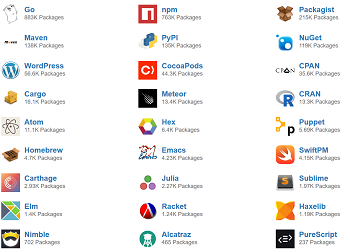NumPY
https://numpy.org/NumPY
NumPy, short for Numerical Python, is an essential library in the Python programming ecosystem, widely recognized for its capacity to handle large, multi-dimensional arrays and matrices. One of its most notable features is its array object, or ndarray, which is a powerful n-dimensional array that allows for efficient storage and manipulation of numerical data. This is a significant upgrade over Python's built-in lists, especially in terms of speed and functionality.
The core of NumPy's power lies in its ability to perform vectorized operations. This means operations on arrays are executed element-wise, enabling fast computation without the need for explicit loops in Python. For example, you can add two arrays element-wise simply by using the '+' operator, something that would require a loop if using regular lists.
Beyond basic arithmetic operations, NumPy also offers a plethora of mathematical functions, ranging from simple ones like sum, min, max, to more complex ones like linear algebra operations, statistical functions, and Fourier transforms. It is particularly effective in handling large data sets, making it a go-to choice for data analysis, scientific computing, and machine learning.
Another key aspect of NumPy is its interoperability with other libraries. Many libraries in the Python data science stack, like Pandas, SciPy, and Matplotlib, are built on top of NumPy and rely on its array functionality. This compatibility allows for seamless data manipulation and analysis workflows.
Moreover, NumPy integrates well with C and C++ code, which is a huge advantage for performance-critical applications. This feature allows developers to write parts of their code in lower-level languages to speed up performance while maintaining the ease of use and readability of Python.
another significant aspect of NumPy is its memory efficiency. The library's ability to store data in contiguous blocks of memory enhances computational speed. This is in stark contrast to Python lists that are inherently slower due to their scattered memory allocation. The compact, homogeneous data types of NumPy arrays require less memory and facilitate faster processing.
NumPy's slicing and indexing capabilities are also noteworthy. These features allow for easy access and manipulation of array elements, enabling users to perform operations on sub-arrays and individual elements with ease. Advanced indexing techniques, such as boolean or fancy indexing, provide powerful ways to retrieve and manipulate data, which is particularly useful in data analysis and manipulation tasks.
Broadcasting is another powerful feature of NumPy. It allows for arithmetic operations between arrays of different shapes, making the code more concise and eliminating the need for explicit loops. For example, you can add a scalar to an array or combine arrays of different dimensions in a way that the smaller array is 'broadcast' across the larger array to ensure compatible shapes for element-wise operations.
In terms of functionality, NumPy extends beyond simple array manipulation. It includes modules for linear algebra, random number generation, and Fourier transform capabilities. These modules make NumPy an all-encompassing library for scientific computing.
NumPy also supports various data types, which is a significant advantage. It can handle not only integers and floats, but also complex numbers, strings, and objects, providing flexibility in data representation and manipulation.
From an educational standpoint, NumPy is a great library for those learning scientific computing or data analysis in Python. It provides a gentle introduction to array-based computing, making it easier for beginners to grasp complex concepts in data science and numerical computation.
Finally, the extensive and active community around NumPy ensures continuous development and support. There's a wealth of documentation, tutorials, and forums available for users at all levels, making it easier to learn and troubleshoot.
NumPy is not just a library but a fundamental tool that has shaped the landscape of numerical computing in Python. Its efficiency, versatility, and wide range of capabilities make it an essential component for anyone working in data science, research, or any field that requires efficient numerical computation.

More Categories
Back To Home
























